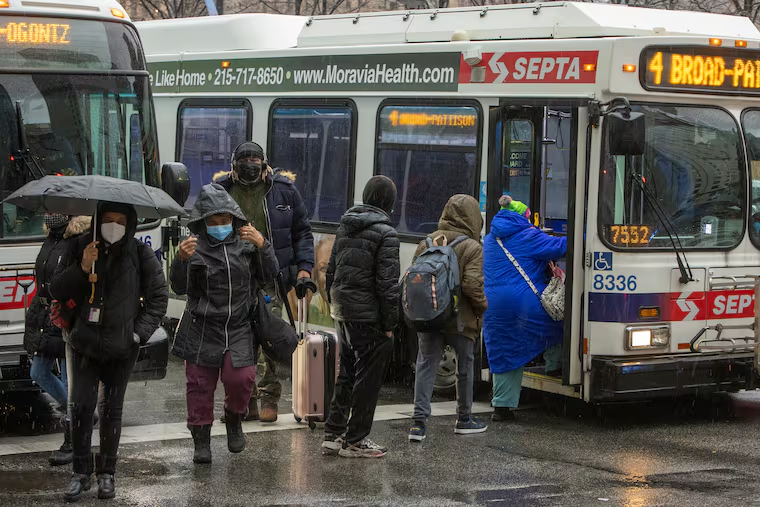SEPTA is tweaking some spring schedules to match demand
The new schedules adjust for changes in ridership patterns and an ongoing shortage of bus operators.

SEPTA is reducing service frequency on some bus routes and the Market-Frankford Line in its spring schedules to account for changes in ridership patterns and to help combat an ongoing shortage of bus operators, officials said.
Two bus routes will get more frequent trips at times buses are full or nearly so, and service will be spaced a little further apart on other routes when there is less demand, said Maureen Lichtner, the authority’s chief officer for service planning.
New schedules will take effect Feb. 27 and Feb. 28.
Which buses will have more frequent trips?
Buses on Route G, which runs between South Philadelphia and Overbrook, will be spaced six minutes apart in the morning peak hours, down from eight minutes, she said. At midday, the headway of the buses will change to every 12 minutes from every 15 minutes.
Those changes would reduce the average number of riders on each bus from 40 to 30 people, Lichtner said.
“We have received complaints of overcrowding there,” she said. “What we did was we redistributed service to accommodate our customers.”
A similar drop in spacing of buses will increase service on Route 70 in the afternoons, when schools are letting out on the Cottman Avenue corridor in Northeast Philadelphia, the agency said.
Which buses will have fewer trips?
Minor frequency reductions will be made on these bus routes:
2
6
19
20
24
29
33
45
46
52
53
57
79
88
124
125
L
As an example, SEPTA said increasing the time between buses on Route 79 in South Philadelphia from every 10 minutes to every 12 minutes during peak afternoon travel times will add only about two passengers per trip, Lichtner said.
SEPTA used real-time data from automatic digital passenger counters to plan the changes.
“It’s still a very robust schedule,” said Jody Holton, assistant general manager for planning. “The changes are tailored to have the least impact on our customers.”
The frequency of trains on the Market-Frankford Line will drop from 5-minute service to 6-minute service to accommodate scheduled maintenance for the El cars.
No routes or lines will be eliminated, SEPTA said. Schedules for trolleys, the Broad Street Line subway, the Norristown High-Speed Line, and Regional Rail will not change.
Though the changes in bus intervals amount to a minute or two, they add up to 28 fewer trips across the network. As a result, 28 drivers will be assigned as a kind of bullpen to fill in for absent drivers, in an effort to reduce the number of trips canceled due to a shortage of operators.
“We will call for a relief operator,” said Scott Sauer, the assistant general manager for operations.
» READ MORE: SEPTA bus riders are frustrated by persistent delays. Officials say a shortage of drivers is to blame
SEPTA has been struggling with a shortage of bus operators due to the pandemic and a generally competitive market for hiring employees, as are many transit systems and private bus lines.
When will these changes take effect?
New schedules will take effect Feb. 27 and Feb. 28; SEPTA said it will post the changes online this week.
Riders can get 25% off the cost of weekly TransPasses, TrailPasses, and Cross-County Passes during the weeks of March 7, 14, and 21.